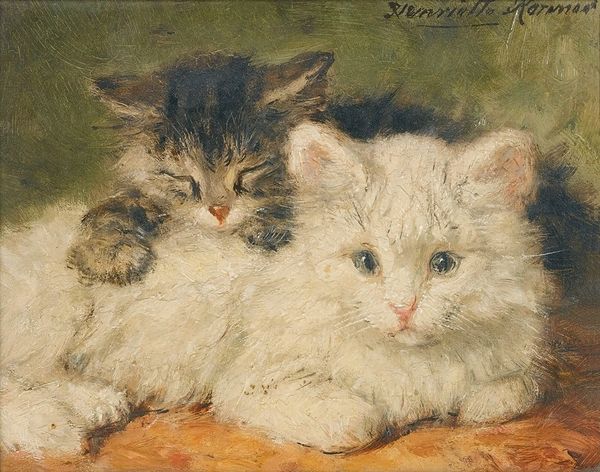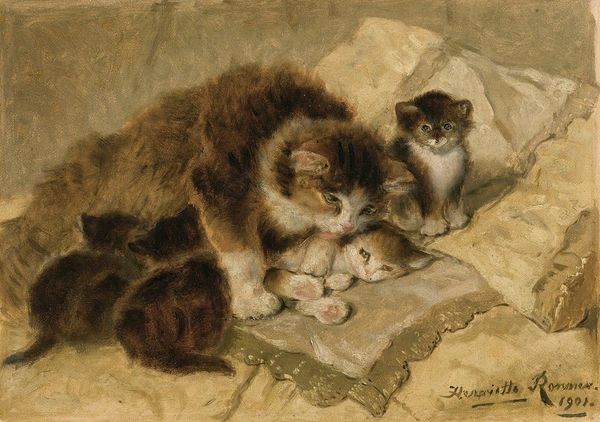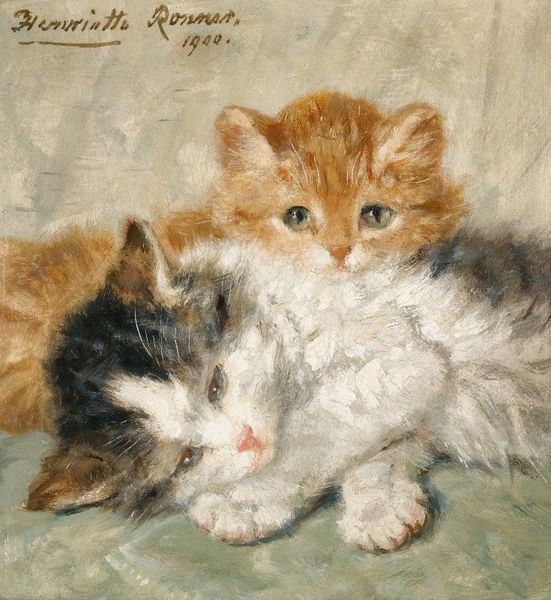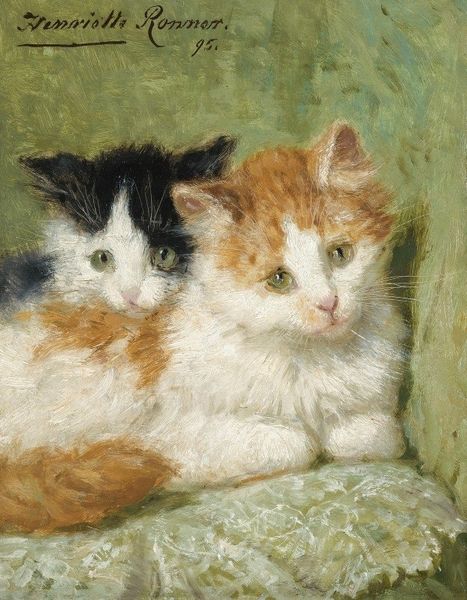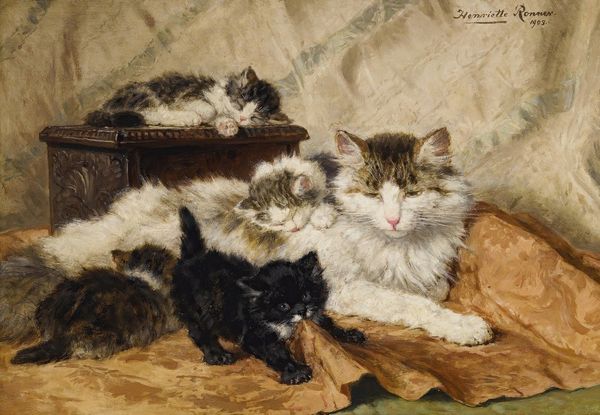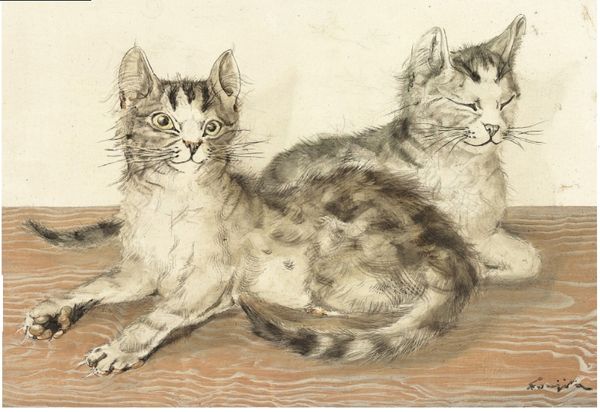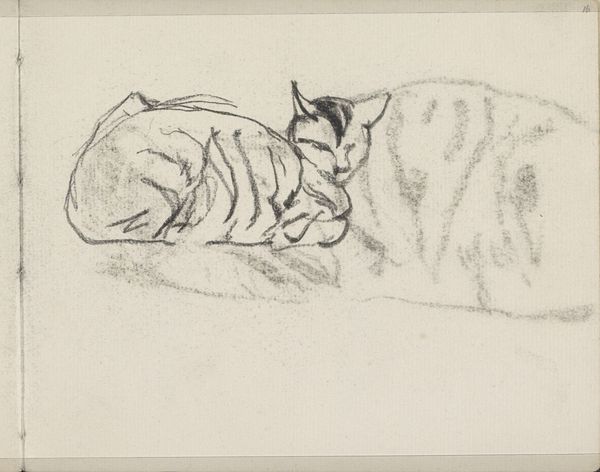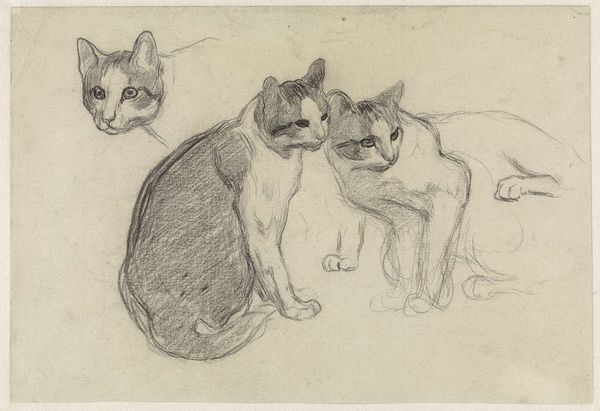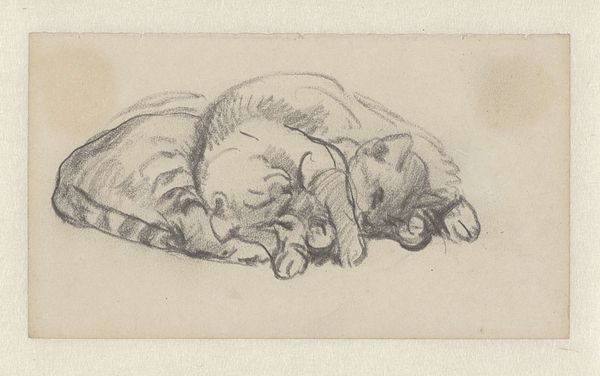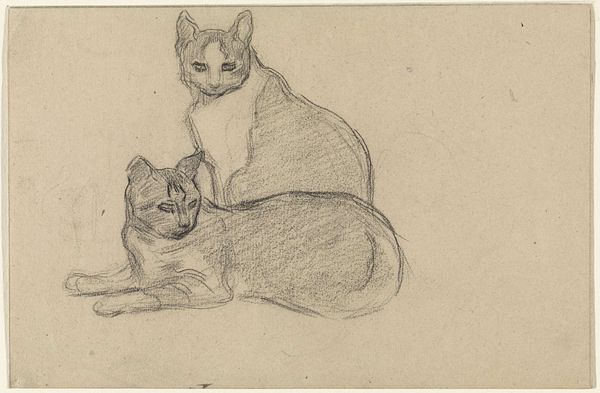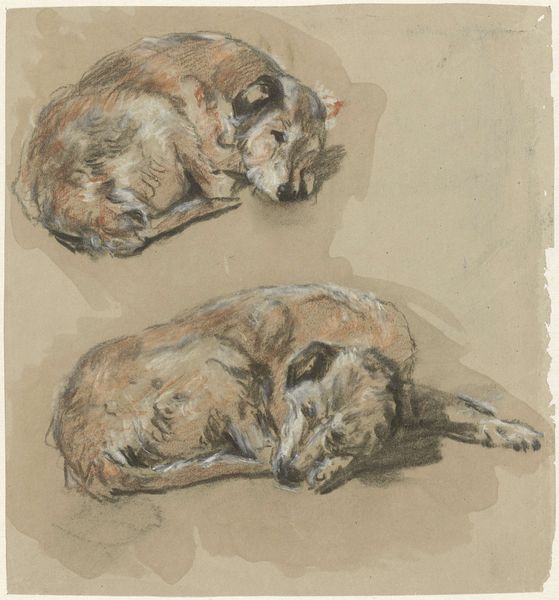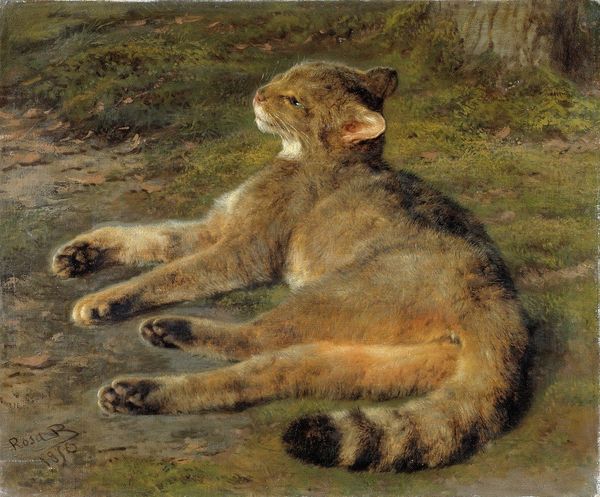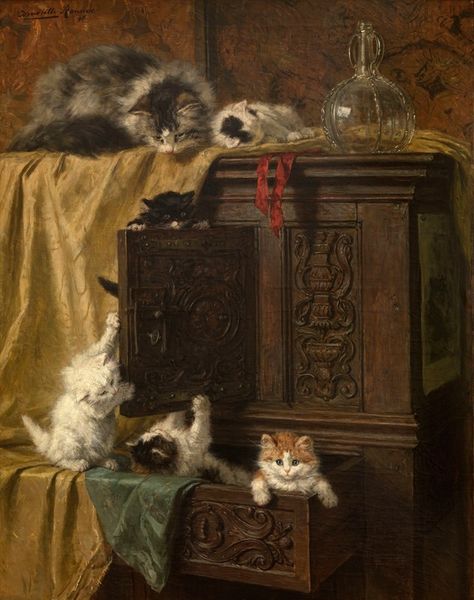
Copyright: Public Domain: Artvee
Curator: Henriëtte Ronner-Knip's "Three Kittens," crafted in 1896 using pastels, presents an intimate glimpse into the world of these playful creatures. What strikes you first about it? Editor: It's immediately the warmth. There is a genuine tenderness radiating from this composition, amplified by soft pastel palette. The coziness is almost palpable. I’m also quite interested in why these images of domesticity continue to resurface. Curator: Ronner-Knip was known for her specialization in painting cats. Consider the social context of late 19th-century Europe; the rise of the middle class brought new attention to domestic life and animals. How might this context have shaped her artistic focus and the appeal of her work? Editor: Right, this reflects a shift in societal values towards domestic comfort and companion animals as central to family life. These representations, whether consciously or not, contribute to shaping cultural ideas of gender roles by suggesting where a woman belongs and what she should value. Curator: That's insightful. Looking closely at Ronner-Knip's impasto technique, she brings incredible texture and depth. How would you say this specific technique adds to our reading of her piece within its genre? Editor: Well, the impasto here certainly softens those crisp lines and allows a viewer a less realistic, more sensual experience of seeing cats, adding a layer of sentimental depth that heightens their adorableness, playing into popular sentimentalism about animals. It really invites the viewer into this domestic scene, perhaps fostering a feeling of familiarity and connection with the subjects. Curator: Indeed, the intimacy that we gather from this piece stems not only from the portrayal of kittens but also from Ronner-Knip's engagement with both the social and artistic currents of her time. It underscores how societal shifts can shape artistic themes and approaches. Editor: Exactly. "Three Kittens," speaks volumes about shifts in socio-economic patterns during its time, a mirror reflecting gendered assumptions about where certain artists belong in the art canon as well.
Comments
No comments
Be the first to comment and join the conversation on the ultimate creative platform.
